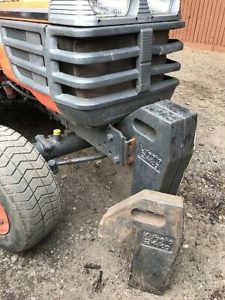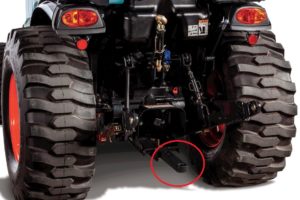Michael Hackett is a lecturer in the Department of Mathematics, Physics & Statistics at the University of Guyana. He has Bachelor of Science (BSc) in Physics and Master of Science (MSc) in Engineering in the Coastal Environment from the University of Southampton. He also hold a Trained Teacher's Certificate from CPCE.
The worst nightmare of a tractor driver while driving is to have his tractor overturn backwards or overturn sideways and pin them underneath, either crushing them to death or drowning them in a muddy rice field. The most recent such accident happened on Sunday November 28, 2021 when a 20-year-old farmer died when his tractor overturned while ploughing a rice field at Vryheid, East Berbice. These kinds of accident occur regularly almost every year across Guyana from the coastland to the hinterland. According to news reports, from 2009 to this year, at least 23 persons (22 males and 1 female) were killed in backwards and sideways overturning tractor accidents. Eighteen fatalities happened on the coastland and five in the hinterland. The two youngest drivers killed were 20 years old, the oldest was 71 and the average age was 41.
From my understanding of the physics of the backwards topple, as the tractor is moving forward, the massive spinning back wheels have enormous traction on the ground. When the wheels suddenly get stuck in a muddy rice field or going up a sandy hillside and stop spinning the huge loss of traction forces the power from the engine to be transferred via the back axle to the body of the tractor causing it to rotate in the opposite direction and flip over backwards. What can be done to prevent the backwards topple and to safeguard the driver if it does happen?
Use Counterweights & Rollover Bars
 Sufficient counterweights should be added to the front of the tractor to provide a counterbalance to reduce the chance of a backwards topple. Fitting strong rollover bars over the driver’s seat or having a strong enclosed driving cabin can save the driver’s life in the event of a backwards or sideways topple. In many countries, it is legally mandatory to have these fitted on to a tractor.
Sufficient counterweights should be added to the front of the tractor to provide a counterbalance to reduce the chance of a backwards topple. Fitting strong rollover bars over the driver’s seat or having a strong enclosed driving cabin can save the driver’s life in the event of a backwards or sideways topple. In many countries, it is legally mandatory to have these fitted on to a tractor.
Reverse Instead of Going Forward
If stuck in mud or sand, do not try to drive forward rapidly, but do so very slowly and carefully, keeping in good touch with the tractor to notice if it is going to backflip. But even with slowly turning back wheels, a backflip can still happen very suddenly in less than a second leaving little or no time to react to take your foot off the clutch. It would be safer to reverse carefully to prevent a backflip. Muddy or wet grounds would increase the chance of a backflip if you are not careful. Revving the engine then releasing the clutch suddenly when driving up a slope such as a canal embankment, a rise in the land or going up a hillside can cause a backwards topple. A sideways topple can happen when driving too fast while turning, driving or parking too near to a canal or drain or driving down a hillside.
Hitch Load Below Back Axle
 Any load, such as a plough, trailer or grass cutter, should be hitched to the tractor at a height below the back axle. Connecting the load, especially a heavy one, at a height above the back axle increases the chance of a dangerous backwards topple. The tractor itself should be strong enough to take the load. At Orealla, an overloaded trailer caused the tractor’s left back wheel to break off, resulting in a backwards topple that killed the driver.
Any load, such as a plough, trailer or grass cutter, should be hitched to the tractor at a height below the back axle. Connecting the load, especially a heavy one, at a height above the back axle increases the chance of a dangerous backwards topple. The tractor itself should be strong enough to take the load. At Orealla, an overloaded trailer caused the tractor’s left back wheel to break off, resulting in a backwards topple that killed the driver.
Know your Environment; Know your Speed
Drive at a speed suitable for the ground conditions, whether on flat ground, a slope or on a hillside, so it would be safer as you would remain in firm control of the tractor at all times. Do not ever attempt any kind of daredevil stunt on a tractor. A tractor is a very powerful vehicle and must always be driven carefully and alertly and be well-maintained at all times so it would give you long years of productive and safe service.


